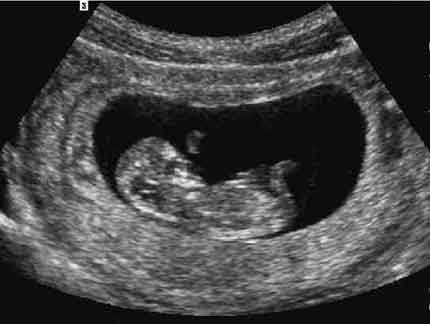A fetal ultrasound (sonogram) is an imaging technique that uses sound waves to produce images of a fetus in the uterus. Fetal ultrasound images can help your health care provider evaluate your baby’s growth and development and monitor your pregnancy. In some cases, fetal ultrasound is used to evaluate possible problems or help confirm a diagnosis.
The first fetal ultrasound is usually done during the first trimester to confirm the pregnancy and estimate how long you’ve been pregnant. If your pregnancy remains uncomplicated, the next ultrasound is typically offered during the second trimester, when anatomic details are visible. A follow-up ultrasound or additional imaging tests, such as an MRI, might be recommended if a problem is suspected.
There are two main types of fetal ultrasound exams:
Transvaginal ultrasound. With this type of fetal ultrasound, a wand-like device called a transducer is placed in your vagina to send out sound waves and gather the reflections. Transvaginal ultrasounds are used most often during early pregnancy. This type of ultrasound also might be done if a transabdominal ultrasound didn’t provide enough information.
Transabdominal ultrasound. A transabdominal fetal ultrasound is done by moving a transducer over your abdomen.
Various other types of transabdominal ultrasounds are available, including:
Specialized sonographic evaluation. This type of exam might be needed in specific circumstances, such as when a fetal abnormality is known or suspected. In this situation, a more detailed evaluation can provide additional information about the abnormality.
3D ultrasound. This exam provides a two-dimensional display of three-dimensional data. This type of ultrasound is sometimes used to help health care providers detect facial abnormalities or neural tube defects.
Doppler ultrasound. A Doppler ultrasound measures slight changes in the ultrasound waves as they bounce off moving objects, such as blood cells. It can provide details about a baby’s blood flow.
Fetal echocardiography. This exam provides a detailed picture of a baby’s heart. It might be used to confirm or rule out a congenital heart defect.

